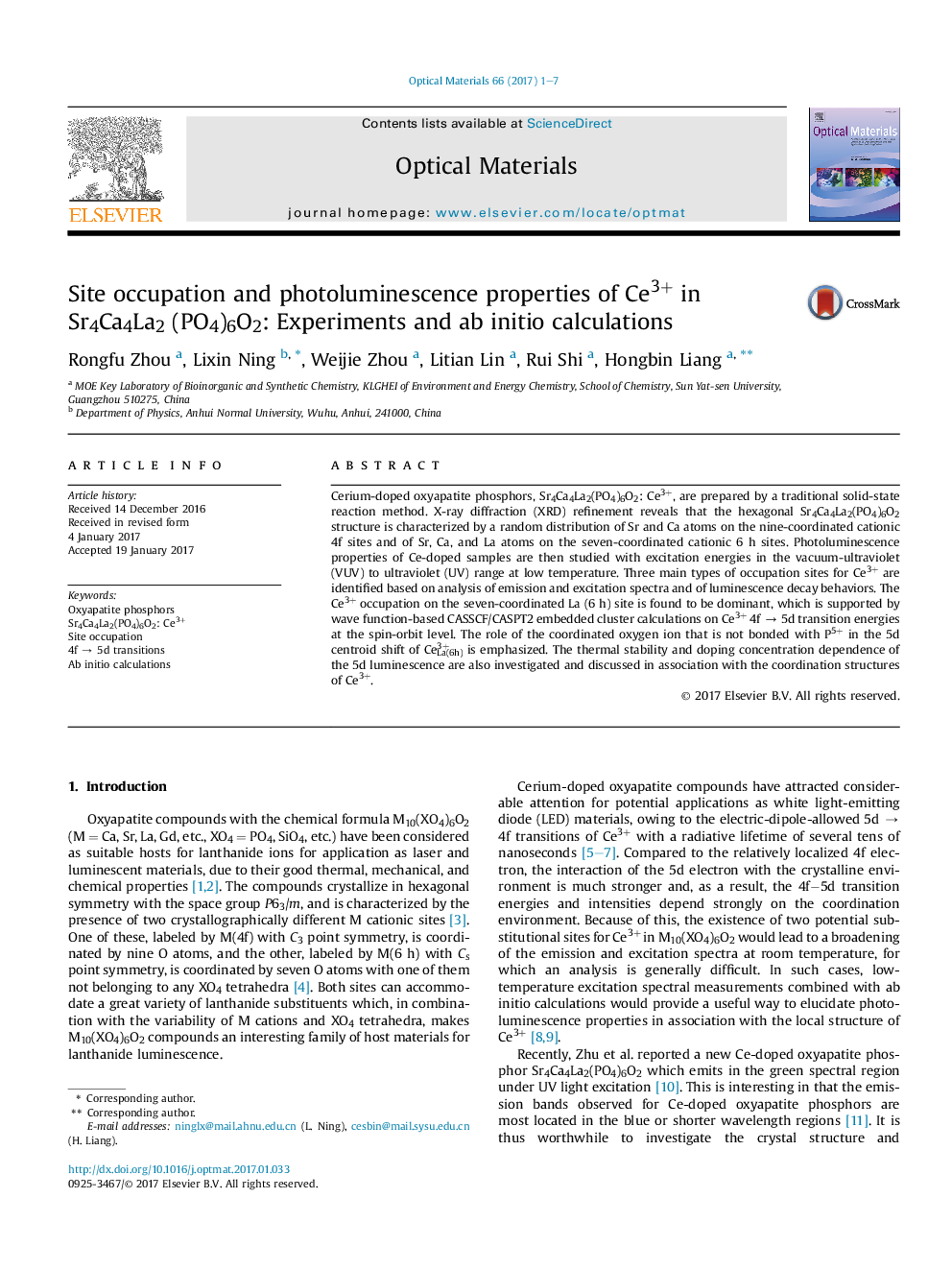| Article ID | Journal | Published Year | Pages | File Type |
|---|---|---|---|---|
| 5442775 | Optical Materials | 2017 | 7 Pages |
Abstract
Cerium-doped oxyapatite phosphors, Sr4Ca4La2(PO4)6O2: Ce3+, are prepared by a traditional solid-state reaction method. X-ray diffraction (XRD) refinement reveals that the hexagonal Sr4Ca4La2(PO4)6O2 structure is characterized by a random distribution of Sr and Ca atoms on the nine-coordinated cationic 4f sites and of Sr, Ca, and La atoms on the seven-coordinated cationic 6 h sites. Photoluminescence properties of Ce-doped samples are then studied with excitation energies in the vacuum-ultraviolet (VUV) to ultraviolet (UV) range at low temperature. Three main types of occupation sites for Ce3+ are identified based on analysis of emission and excitation spectra and of luminescence decay behaviors. The Ce3+ occupation on the seven-coordinated La (6 h) site is found to be dominant, which is supported by wave function-based CASSCF/CASPT2 embedded cluster calculations on Ce3+ 4f â 5d transition energies at the spin-orbit level. The role of the coordinated oxygen ion that is not bonded with P5+ in the 5d centroid shift of CeLa(6h)3+ is emphasized. The thermal stability and doping concentration dependence of the 5d luminescence are also investigated and discussed in association with the coordination structures of Ce3+.
Related Topics
Physical Sciences and Engineering
Materials Science
Ceramics and Composites
Authors
Rongfu Zhou, Lixin Ning, Weijie Zhou, Litian Lin, Rui Shi, Hongbin Liang,
